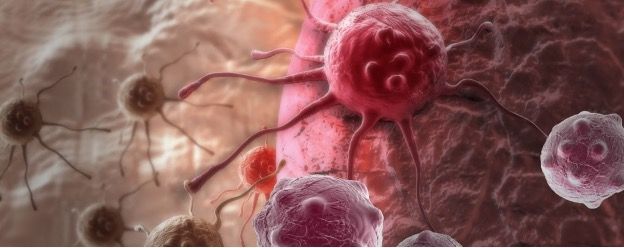WHAT IS CANCER: ONCOLOGY
Many patients absolutely uniquely interpret the terms "cancer", "oncology", "malignant neoplasm". However, it should be realized that this is not one disease, but rather a whole class of diseases that have both similarities and significant differences.
Oncological disease (cancer) is a malignant tumor with uncontrolled cell reproduction, accompanied by the invasion into underlying tissues and metastasis to distant organs with a lymph and/or blood flow. In common terms cancer is known as any malignant tumor, but scientists include here only carcinomas - tumors growing from epithelial tissues. Malignant neoplasm from other tissues is called sarcoma, malignant neoplasm of the lymphatic system is called lymphoma, and malignant neoplasm of the hematopoietic system is called leukemia.

Often, oncology is perceived by patients as a death sentence. However, in reality, not all malignant tumors lead to the death of a person. More than half of all patients are successfully cured and people forget about the disease forever.
Despite significant advances in oncology treatment, this pathology is still characterized by a fairly high mortality rate and, of course, requires the closest attention from highly qualified doctors for successful treatment.
Mechanism of cancer development
The basis of oncological disease is a violation in the processes of tissue growth regulation.
The cells of our body are constantly being renewed. In the process of their division there is always a likelihood of errors in the genes (mutations). This happens in the norm also, but their frequency increases significantly when the body is exposed to such adverse factors as carcinogens, ionizing radiation, etc.
Various mechanisms exist to prevent and correct mutations. If they do not work, a cell with damaged DNA develops and divides many times, not obeying the controlling systems of the body. As a result, a neoplasm is formed, which is usually called "malignant tumor".
Malignant tumors are characterized by three key differences from benign ones:
- Uncontrolled endless growth.
- Germination (invasion) into neighboring tissues and organs with a violation of their functioning.
- Ability to metastatic spread - the process of cancer cells migration with the blood or lymph flow to other parts of the body
These characteristics determine the aggressiveness of the process and its malignancy.
A neoplasm may consist of dense tissue, then it is called a solid tumor. However, it can also have a liquid consistency, as in leukemia and lymphoma.
Difficulties in cancer treatment
Oncological disease can occur in any living body at any age. However, this risk increases with age. It is believed that more than 64% of the cases are detected in people over 65. However, at present, oncologists say that cancer patients become younger. Ever more often the disease is diagnosed before 40.
There are two main problems in the treatment of this pathology:
-
The prevalence of the tumor process, which limits the possibilities of radical surgical treatment.
-
Heterogeneity of the cellular composition of the tumor. It is possible to choose drugs that will kill 99% of the tumor cells, but if at least a few of them survive, they will divide again, and the disease recurrence will develop.







 public offer
public offer










